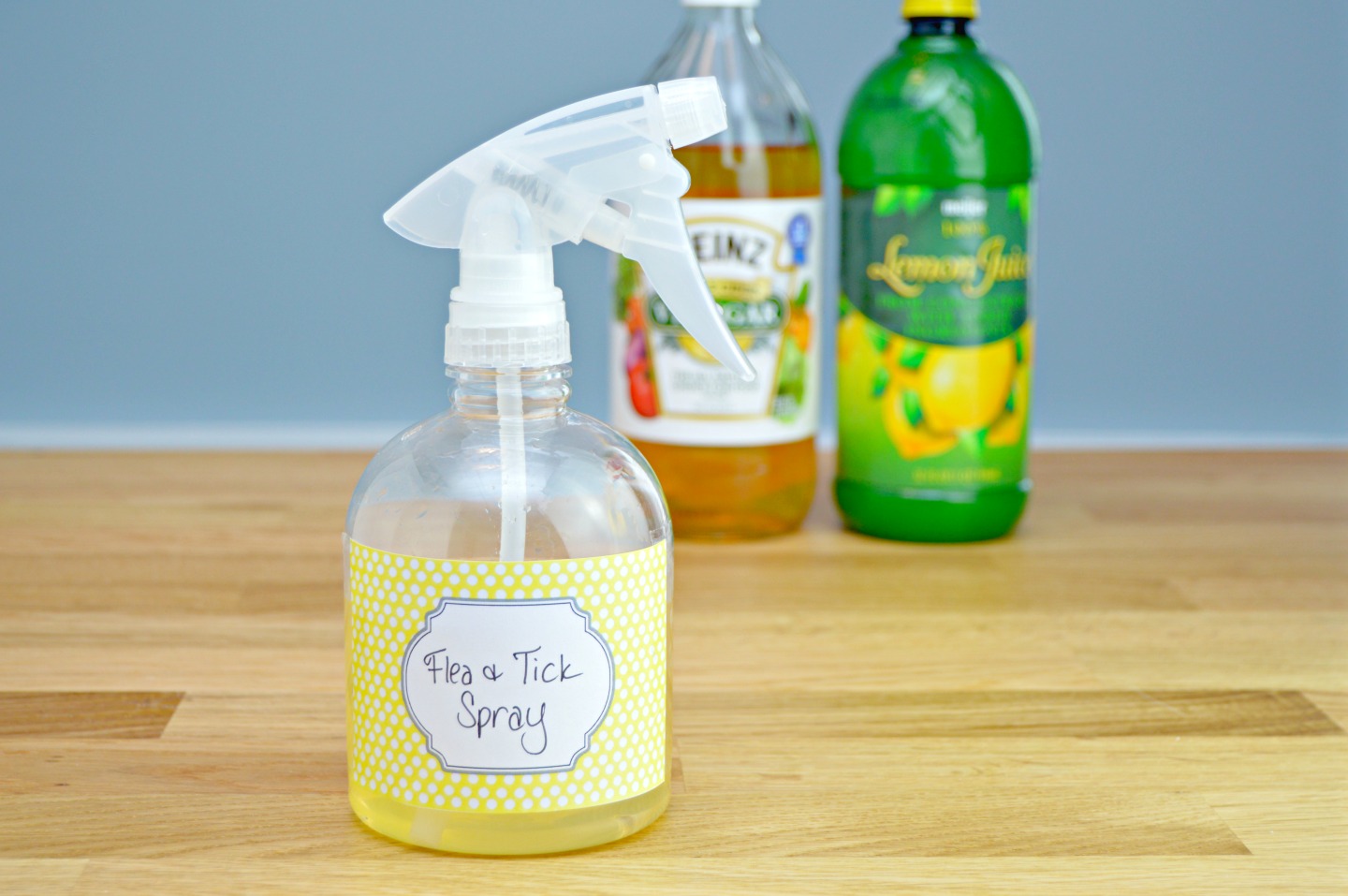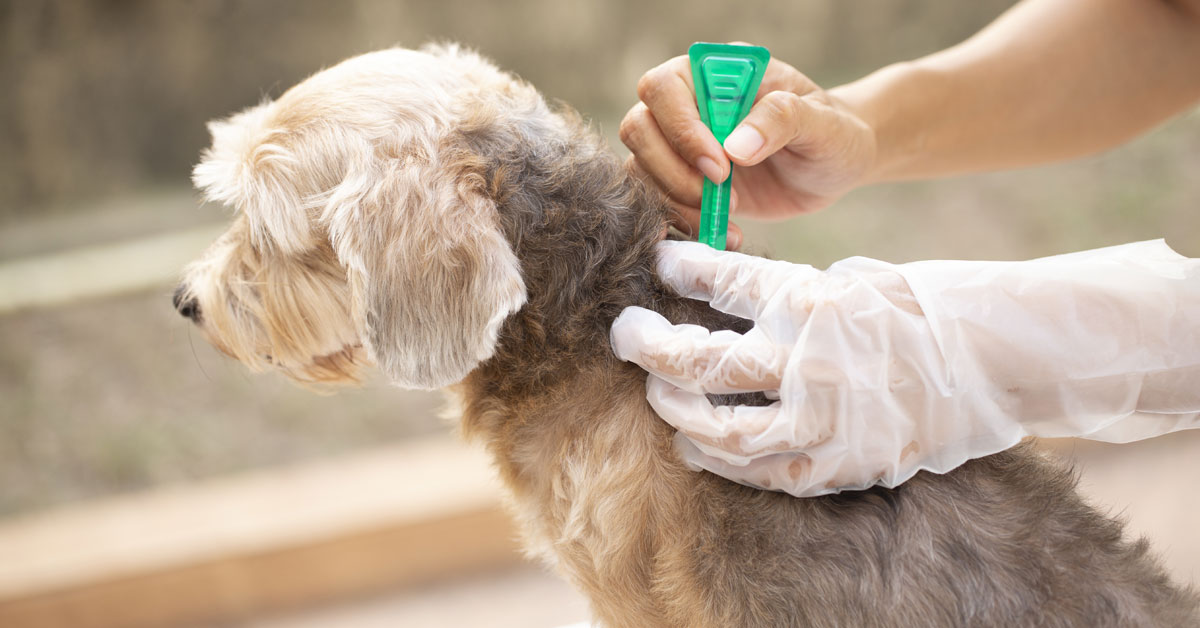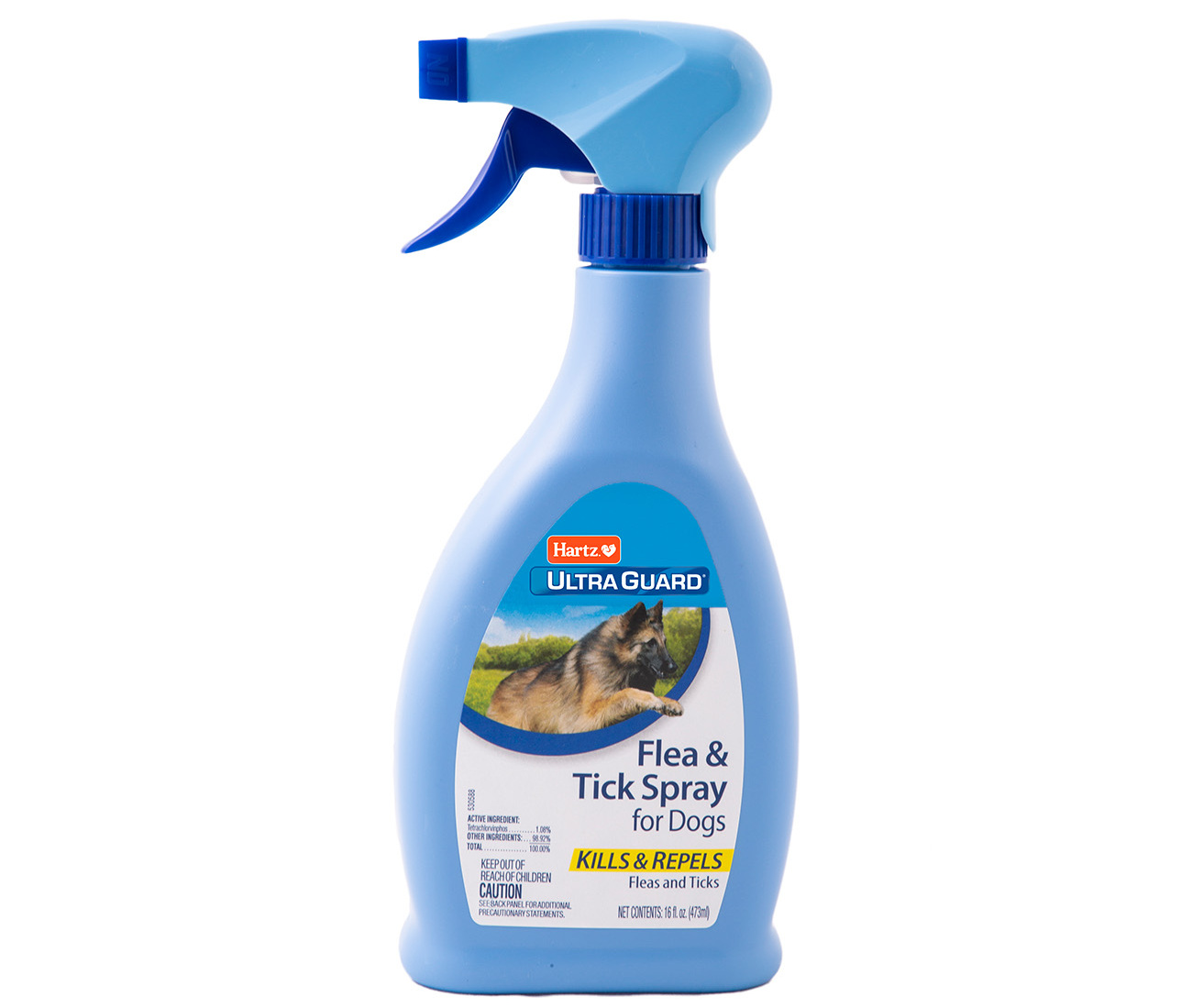Home>Health & Wellness>Common Health Issues>How To Make Natural Flea And Tick Repellent For Dogs?


Common Health Issues
How To Make Natural Flea And Tick Repellent For Dogs?
Published: February 3, 2024
Learn how to protect your dog from common health issues with natural flea and tick repellent. Keep your furry friend safe and healthy with these simple DIY solutions.
(Many of the links in this article redirect to a specific reviewed product. Your purchase of these products through affiliate links helps to generate commission for Pawsomeoldies.com, at no extra cost. Learn more)
Table of Contents
Introduction
Fleas and ticks are common pests that can cause discomfort and health issues for dogs. While there are numerous commercial flea and tick repellent products available, many pet owners are concerned about the potential risks associated with the chemicals found in these products. As a result, there has been a growing interest in natural alternatives that are safe and effective for protecting dogs from these pesky parasites.
In recent years, the dangers of chemical flea and tick repellents have come under scrutiny. Many conventional products contain synthetic pesticides and insecticides that can pose risks to both pets and humans. These chemicals can potentially lead to skin irritation, allergic reactions, and even more severe health problems in some cases. Additionally, there are concerns about the environmental impact of these chemicals, as they can contaminate water sources and harm non-target organisms.
Given these concerns, pet owners are increasingly seeking natural and non-toxic solutions for flea and tick control. Natural repellents offer a safer and eco-friendly alternative to chemical products, providing peace of mind for pet owners while effectively managing flea and tick infestations.
In this article, we will explore the dangers of chemical flea and tick repellents, the natural ingredients that can be used to create effective repellent solutions, and provide easy-to-follow recipes for making natural flea and tick repellent for dogs. By harnessing the power of nature, pet owners can take proactive steps to protect their furry companions from fleas and ticks without exposing them to potentially harmful chemicals.
Understanding the dangers of chemical flea and tick repellents
Chemical flea and tick repellents have long been a go-to solution for pet owners seeking to protect their dogs from infestations. However, the use of synthetic pesticides and insecticides in these products raises significant concerns about the potential risks they pose to both pets and humans.
One of the primary dangers associated with chemical flea and tick repellents is the risk of adverse health effects on pets. Many conventional products contain potent chemicals that can cause skin irritation, allergic reactions, and even more severe health issues in some cases. Dogs with sensitive skin are particularly vulnerable to these adverse effects, experiencing discomfort and distress as a result of exposure to these harsh chemicals.
In addition to the direct impact on pets, there are also concerns about the potential risks to human health. Pet owners who handle chemical flea and tick repellents are at risk of exposure to harmful substances, which can be absorbed through the skin or inhaled during application. This exposure can lead to health issues ranging from skin irritation and respiratory problems to more serious long-term health effects.
Furthermore, the environmental impact of chemical flea and tick repellents cannot be overlooked. When these products are used, the active ingredients can leach into the environment, contaminating soil and water sources. This contamination poses risks to non-target organisms, including beneficial insects, wildlife, and aquatic life. Moreover, the accumulation of these chemicals in the environment can have far-reaching ecological consequences, disrupting delicate ecosystems and contributing to environmental degradation.
Another significant concern is the potential for chemical residues to persist on pet fur and in the home environment. Residual chemicals from flea and tick repellents can be ingested or absorbed by pets, leading to ongoing exposure even after the initial application. Additionally, these residues can accumulate in living spaces, posing risks to both pets and humans through prolonged contact.
Given these dangers, it is evident that the use of chemical flea and tick repellents carries significant risks for pets, humans, and the environment. As a result, many pet owners are seeking safer and more natural alternatives to protect their dogs from fleas and ticks, prioritizing the well-being of their pets and the broader ecosystem.
Natural ingredients for making flea and tick repellent
When it comes to safeguarding our furry companions from fleas and ticks, natural ingredients offer a safe and effective alternative to chemical repellents. These natural ingredients not only help repel pests but also nourish and protect the skin and coat of dogs. By harnessing the power of nature, pet owners can create their own homemade flea and tick repellents, tailored to their dog's specific needs.
Essential Oils
Essential oils are potent extracts derived from plants and are known for their natural insect-repelling properties. Certain essential oils, such as cedarwood, lavender, peppermint, eucalyptus, and lemongrass, are effective in repelling fleas and ticks. These oils contain compounds that pests find unpleasant, deterring them from latching onto the dog's fur and skin. When used in appropriate dilutions, essential oils can be a powerful and safe tool for flea and tick control.
Apple Cider Vinegar
Apple cider vinegar is a versatile natural ingredient that can be used to create a flea and tick repellent spray. Its acidic nature makes it an inhospitable environment for pests, effectively repelling fleas and ticks. When diluted with water and applied as a spray, apple cider vinegar can help protect dogs from infestations while also promoting a healthy coat.
Neem Oil
Neem oil, derived from the seeds of the neem tree, is renowned for its insecticidal and repellent properties. It contains compounds that disrupt the growth and development of fleas and ticks, making it an effective natural ingredient for flea and tick control. Neem oil can be incorporated into homemade repellent formulations to provide long-lasting protection for dogs.
Aloe Vera
Aloe vera is not only soothing for the skin but also has natural repellent properties against fleas and ticks. Its cooling and moisturizing effects make it a valuable addition to homemade repellents, helping to alleviate skin irritation while deterring pests.
Herbal Infusions
Herbs such as rosemary, thyme, and basil can be infused in water to create natural repellent sprays. These herbs contain aromatic compounds that pests find displeasing, making them effective natural deterrents. Herbal infusions offer a gentle yet potent way to protect dogs from fleas and ticks while imparting a pleasant fragrance.
By utilizing these natural ingredients, pet owners can craft their own flea and tick repellent formulations, tailored to their dog's individual needs. These ingredients not only provide effective pest control but also offer additional benefits for the skin and coat, promoting overall well-being for canine companions.
Recipes for natural flea and tick repellent for dogs
Creating homemade flea and tick repellents using natural ingredients is a rewarding and effective way to protect dogs from pesky parasites. These simple yet potent recipes harness the power of nature to provide safe and non-toxic solutions for flea and tick control.
Read more: How To Naturally Kill Ticks On Dogs
Recipe 1: Essential Oil Spray
Ingredients:
- 2 cups of distilled water
- 1 tablespoon of apple cider vinegar
- 10 drops of lavender essential oil
- 5 drops of cedarwood essential oil
- 5 drops of peppermint essential oil
Instructions:
- In a spray bottle, combine the distilled water and apple cider vinegar.
- Add the lavender, cedarwood, and peppermint essential oils to the mixture.
- Secure the spray bottle cap and shake well to ensure thorough mixing.
- Before each use, shake the bottle to disperse the essential oils evenly.
- To apply, lightly mist the repellent onto the dog's coat, focusing on areas prone to flea and tick infestations.
Recipe 2: Herbal Infusion Rinse
Ingredients:
- 4 cups of water
- 1 tablespoon of dried rosemary
- 1 tablespoon of dried thyme
- 1 tablespoon of dried basil
Instructions:
- In a pot, bring the water to a gentle boil.
- Add the dried rosemary, thyme, and basil to the boiling water.
- Allow the herbs to steep in the water for 30 minutes, creating a potent herbal infusion.
- Once the infusion has cooled to a comfortable temperature, strain out the herbs, leaving behind the infused liquid.
- After bathing the dog, pour the herbal infusion over the coat, ensuring thorough coverage.
- Gently massage the infusion into the fur and skin, allowing it to air dry naturally.
Recipe 3: Neem Oil Repellent
Ingredients:
- 1 ounce of cold-pressed neem oil
- 10 ounces of a carrier oil (such as coconut oil or almond oil)
- 20 drops of eucalyptus essential oil
- 10 drops of lemongrass essential oil
Instructions:
- In a glass bottle, combine the neem oil and carrier oil, ensuring a well-blended mixture.
- Add the eucalyptus and lemongrass essential oils to the neem oil blend.
- Secure the bottle cap and shake vigorously to thoroughly mix the ingredients.
- Prior to each use, shake the bottle to ensure the oils are evenly distributed.
- Apply a small amount of the neem oil repellent to the dog's coat, focusing on areas susceptible to flea and tick attachment.
By incorporating these natural recipes into a regular grooming routine, pet owners can provide their dogs with effective protection against fleas and ticks while avoiding the potential risks associated with chemical repellents. These natural formulations not only serve as powerful pest deterrents but also contribute to the overall well-being of canine companions.
Application and usage tips
Proper application and usage of natural flea and tick repellents are essential to ensure their effectiveness and safety for dogs. By following these tips, pet owners can maximize the benefits of natural repellent solutions while minimizing the risk of adverse effects.
Read more: What Is The Safest Tick Repellent For Dogs
Patch Test
Before applying any homemade repellent to a dog's entire coat, it is advisable to conduct a patch test. This involves applying a small amount of the repellent to a localized area of the dog's skin and monitoring for any adverse reactions. A patch test helps determine if the dog has any sensitivity to the ingredients and allows pet owners to make adjustments if necessary.
Dilution Ratios
When using essential oils or concentrated ingredients in repellent formulations, it is crucial to adhere to proper dilution ratios. Essential oils are potent and should be diluted with carrier oils or water to ensure they are safe for topical application on dogs. Following recommended dilution guidelines helps prevent skin irritation and ensures that the repellent is gentle yet effective.
Avoiding Sensitive Areas
During application, pet owners should be mindful of avoiding sensitive areas such as the eyes, ears, and mucous membranes. Care should be taken to apply the repellent to the dog's coat, focusing on areas where fleas and ticks are likely to hide, such as the neck, back, and hindquarters. Using a gentle and controlled approach can help prevent discomfort for the dog during application.
Regular Reapplication
Natural repellents may require more frequent reapplication compared to chemical products. Pet owners should consider the outdoor environment, the dog's activity level, and the presence of pests when determining the frequency of reapplication. Regular reapplication ensures continuous protection against fleas and ticks, especially during peak infestation seasons.
Read more: What Can I Spray On My Dogs To Repel Ticks
Environmental Considerations
In addition to applying repellents directly to the dog, pet owners should also consider environmental management to reduce the risk of flea and tick infestations. This includes regularly washing and cleaning the dog's bedding, vacuuming indoor spaces, and maintaining outdoor areas to minimize pest habitats. Combining natural repellents with environmental control measures can enhance overall effectiveness.
Observation and Monitoring
After applying a natural repellent, pet owners should observe their dog for any signs of discomfort, irritation, or adverse reactions. Monitoring the dog's behavior and skin condition can help identify any potential issues and allow for prompt adjustments to the repellent formulation or application method.
By adhering to these application and usage tips, pet owners can confidently utilize natural flea and tick repellents to safeguard their dogs from infestations while prioritizing their well-being and comfort. These proactive measures contribute to a holistic approach to pest control, promoting a healthy and pest-free environment for canine companions.
Conclusion
In conclusion, the shift towards natural flea and tick repellents for dogs reflects a growing awareness of the potential risks associated with chemical products and a desire to prioritize the well-being of pets and the environment. The dangers of chemical flea and tick repellents, including adverse health effects on pets and humans, environmental contamination, and the persistence of chemical residues, have prompted pet owners to seek safer and more sustainable alternatives.
By embracing natural ingredients such as essential oils, apple cider vinegar, neem oil, and herbal infusions, pet owners can create effective homemade repellents that not only repel fleas and ticks but also provide additional benefits for the skin and coat of dogs. These natural ingredients offer a gentle yet potent approach to pest control, harnessing the power of nature to safeguard canine companions without exposing them to harsh chemicals.
The provided recipes for natural flea and tick repellents offer pet owners practical and accessible solutions for protecting their dogs from infestations. From essential oil sprays to herbal infusions and neem oil formulations, these recipes empower pet owners to take proactive measures in managing flea and tick issues while promoting overall well-being for their furry friends.
Furthermore, the application and usage tips outlined in this article serve as valuable guidance for pet owners, ensuring that natural repellents are applied effectively and safely. By conducting patch tests, adhering to dilution ratios, avoiding sensitive areas, and implementing environmental considerations, pet owners can maximize the benefits of natural repellents while minimizing potential risks.
Ultimately, the adoption of natural flea and tick repellents represents a holistic approach to pet care, aligning with the growing emphasis on natural and sustainable practices. By prioritizing the use of natural ingredients and mindful application techniques, pet owners can provide their dogs with effective protection against fleas and ticks while contributing to a healthier and more environmentally conscious approach to pest control.
In embracing natural solutions, pet owners not only safeguard their dogs from potential health risks associated with chemical products but also contribute to a safer and more sustainable environment for all living beings. Through the power of nature, pet owners can nurture a harmonious and pest-free environment for their beloved canine companions, promoting their well-being and vitality for years to come.











